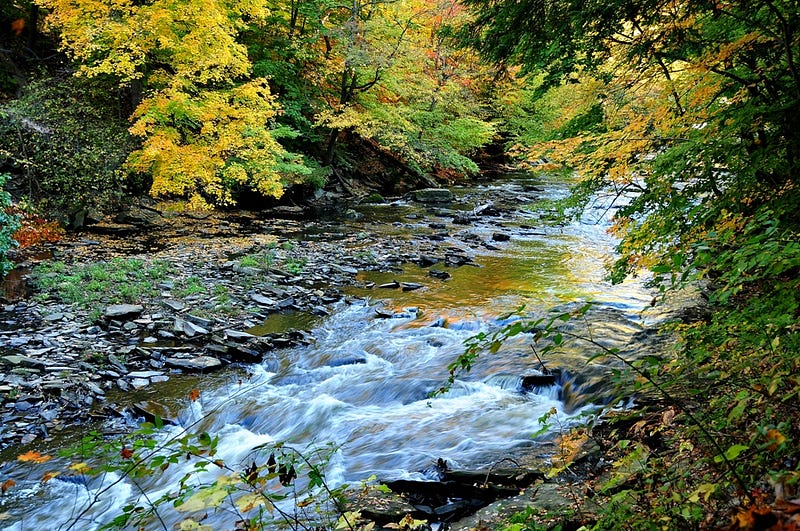
“While at first it seems like a story of death, I am optimistic and would suggest it is a story of recovery.”
Mussels are found in the Cuyahoga River, which travels through several Metro Parks, and these shelled creatures can tell us a lot about its health.
Summit Metro Parks biologists recently participated in a mussel survey of the Cuyahoga in collaboration with Dr. Robert Krebs from Cleveland State University and his students Rachel Andrikanich and Nikko Hogya. Park biologist Ryan Trimbath shares his findings and thoughts on the area’s mussel population.
Should we feel encouraged by the survey?
Yes, I think we should be encouraged. While at first it seems like a story of death, I am optimistic and would suggest it is a story of recovery.
The Cuyahoga River has been impacted by humans for over 200 years. A full recovery will take time and energy, but major improvements have already been made.
When Summit Metro Parks engages in restoration projects, the new environments allow animal groups (like birds and small mammals) to recover. However, since mussels have limited mobility and strict habitat requirements, many species may be lost from the Cuyahoga watershed and will not be able to return without our help. Monitoring and research will be necessary to determine the next steps in restoring the river to its historic conditions.
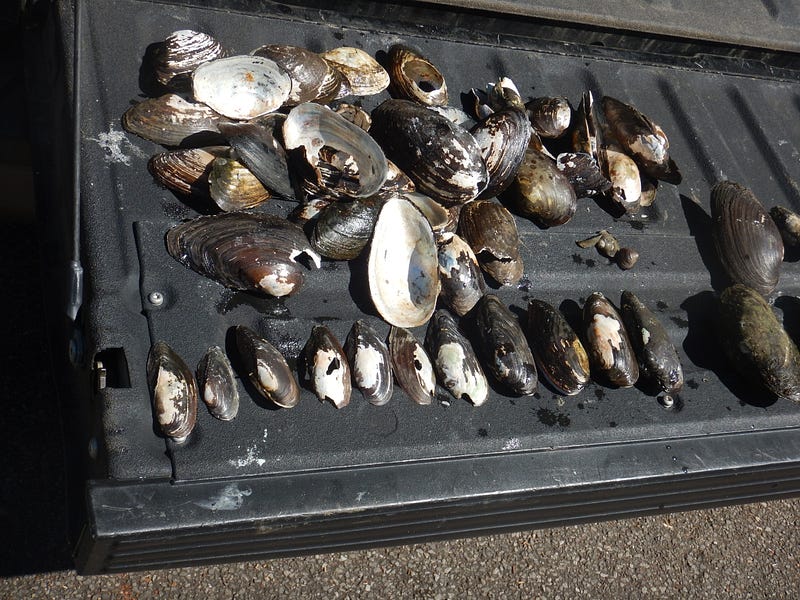
Why did we do this project?
Over half of Ohio’s native freshwater mussel species are endangered, removed or extinct. With recent efforts to restore the Cuyahoga River through dam removal and improvements to wastewater treatment facilities, freshwater mussels have a new chance for recovery.
Prior to this survey we had no knowledge of the freshwater mussel community between Lake Rockwell in Kent and Cuyahoga Valley National Park. (Note: We did not survey in CVNP.) Now, with this baseline data, we can monitor changes in the mussel community.
Why are mussels important?
Freshwater mussels are an important part of river communities. They are considered “ecological engineers” for their ability to modify river habitats. By siphoning water, they remove organic particulates such as algae and bacteria, and make nutrients available to other aquatic life. Mussel beds can become diversity “hot spots,” as shells provide a suitable environment on which algae and insect larvae attach, which in turn attracts fish looking for food. Additionally, a healthy mussel population can serve as a food source for river otters.
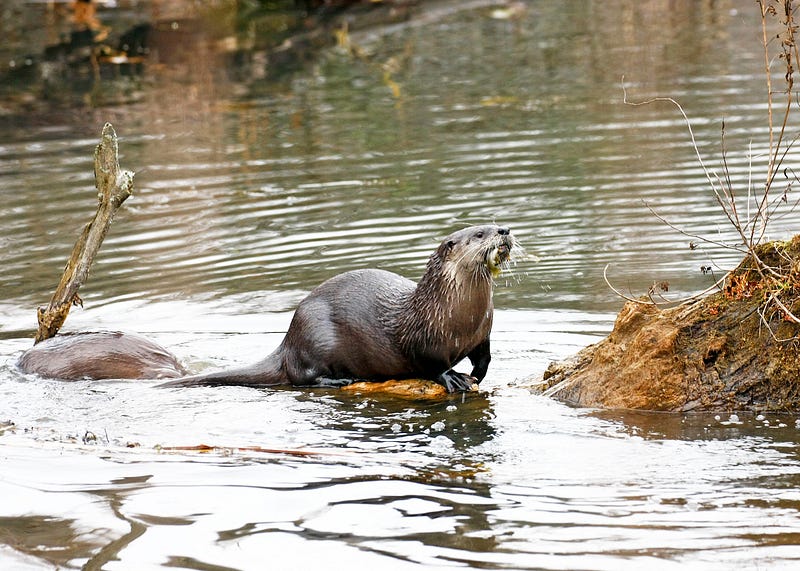
What were the survey results?
We documented nine mussel species total, but only three were living. In all, we only found 37 live individuals; 28 of which were a single species, Lampsilis siliquoidea (fat muckett).
Most observations were of mussel shells. The majority were found upstream in Cuyahoga Falls all the way to Lake Rockwell. The abundance of shells was variable in this stretch, but species composition was similar (giant floater, eastern pondmussel and fat muckett). Few specimens were found downstream of Gorge Metro Park, and none there were alive. Additionally, the Fuller Park site in Kent was unique, as it is where we found most of the live individuals (23 fat mucketts).
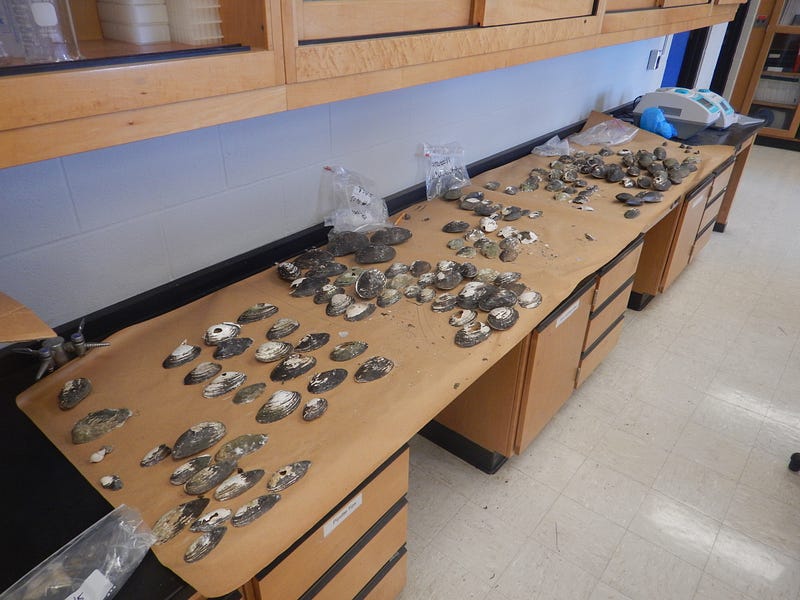
What was the most surprising discovery?
We were surprised to find so few live individuals, and at first it was a bit concerning. Based on comparisons to past surveys in other river sections, the ratio of live to dead shells was very low suggesting major die-offs occurring recently — but that’s not necessarily a bad thing. The species we found were ones that mostly prefer lakes, ponds and very slow moving water. Recent dam removals have restored the Cuyahoga to what it should be: a fast-flowing, shallow river. It is no longer suitable for these species and is likely the reason we found so few live individuals.
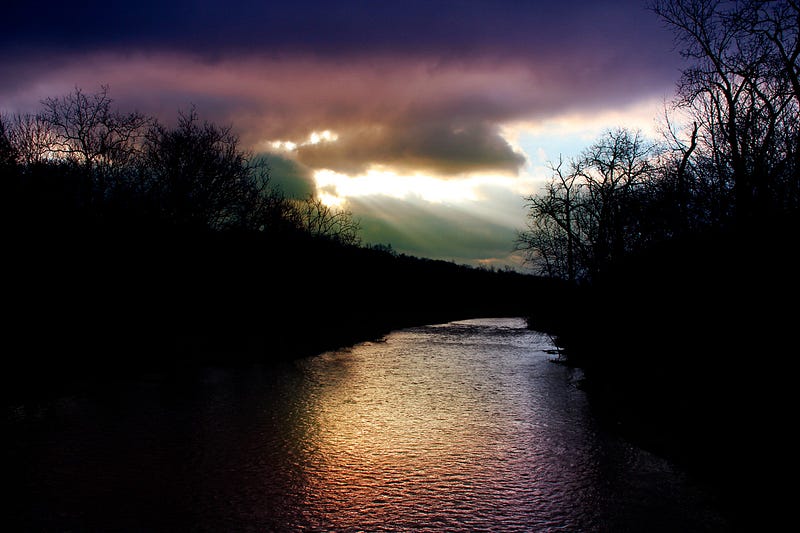
This survey was done in collaboration with Dr. Robert Krebs from Cleveland State University and his students Rachel Andrikanich and Nikko Hogya.